- Afrikaans
- Albanian
- Amharic
- Arabic
- Armenian
- Azerbaijani
- Basque
- Belarusian
- Bengali
- Bosnian
- Bulgarian
- Catalan
- Cebuano
- Corsican
- Croatian
- Czech
- Danish
- Dutch
- English
- Esperanto
- Estonian
- Finnish
- French
- Frisian
- Galician
- Georgian
- German
- Greek
- Gujarati
- Haitian Creole
- hausa
- hawaiian
- Hebrew
- Hindi
- Miao
- Hungarian
- Icelandic
- igbo
- Indonesian
- irish
- Italian
- Japanese
- Javanese
- Kannada
- kazakh
- Khmer
- Rwandese
- Korean
- Kurdish
- Kyrgyz
- Lao
- Latin
- Latvian
- Lithuanian
- Luxembourgish
- Macedonian
- Malgashi
- Malay
- Malayalam
- Maltese
- Maori
- Marathi
- Mongolian
- Myanmar
- Nepali
- Norwegian
- Norwegian
- Occitan
- Pashto
- Persian
- Polish
- Portuguese
- Punjabi
- Romanian
- Russian
- Samoan
- Scottish Gaelic
- Serbian
- Sesotho
- Shona
- Sindhi
- Sinhala
- Slovak
- Slovenian
- Somali
- Spanish
- Sundanese
- Swahili
- Swedish
- Tagalog
- Tajik
- Tamil
- Tatar
- Telugu
- Thai
- Turkish
- Turkmen
- Ukrainian
- Urdu
- Uighur
- Uzbek
- Vietnamese
- Welsh
- Bantu
- Yiddish
- Yoruba
Ko te kohua rino maha-mahi, me tana mahi whakawera wera me te hanga roa matarohia, kua noho hei taputapu tunu kai i roto i te kihini. Ko tana painga nui kei roto i tana rokiroki wera rite, ka taea te pupuri i te pāmahana mo te wa roa. Ahakoa he tunu, he koropupu, he parai, he tunu ranei, ka taea e ia te mau i te reka o nga kai me te whakanui i te reka o te rihi. Ka whakatauritea ki nga taputapu tunu kai noa, ka kaha ake te whakamahana a nga POTS rino, he pai rawa atu mo nga kai maoa puhoi, kia ngawari ake te kai me te hupa.
Ko tenei taputapu tunu kai he mea whakarewa mai i te rino whakarewa kounga teitei, he mea rongoa ki te hangarau tohu tohu-nui. Ehara i te mea ka aukati i te waikura me te piri, he ngawari ki te horoi, engari ka karo i te whakapiri tika i waenga i te kai me te whakarewa, te whakarite i te haumaru kai. I tenei wa, he kanapa te tae o te paninga enamel, he whakakotahi i te whaihua me te rerehua. Ka taea te whakamahi i runga i te oumu tae atu ki te oumu, ka tutuki nga hiahia tunu kai.
Ko tana hoahoa maha-mahi he mea tino nui. Ka taea te whakamahi kotahi kohua mo nga kaupapa maha, e tika ana mo te parai ia ra, te parai, te tunu, me te tunu kai reka. Kaore he take ki te whakarereke i nga taputapu tunu, na reira ka penapena te waahi kihini. Ko te taupoki o te kohua me te mahi hiri kaha, ka honoa ki te hoahoa topata wai-whaiaro, ka taea te kati i te wai me te reka, te whakaiti i te mate wai, ka pai ake te reka o te tunu. I tua atu, he matotoru te tinana o te kohua, he pakari, he roa, ka taea te tuku ki raro mo nga tau tekau ki te whakamahia tika. Ka taea te kii he taputapu kihini taumata "whanau tuku iho".
Whether it's for home cooking or entertaining guests, the cast iron multi-functional pot can demonstrate professional-level cooking effects and is an ideal choice for families that pay attention to the quality of life. Its retro and classic design also adds a touch of warmth and texture to the kitchen, making it a perfect blend of practicality and aesthetics.
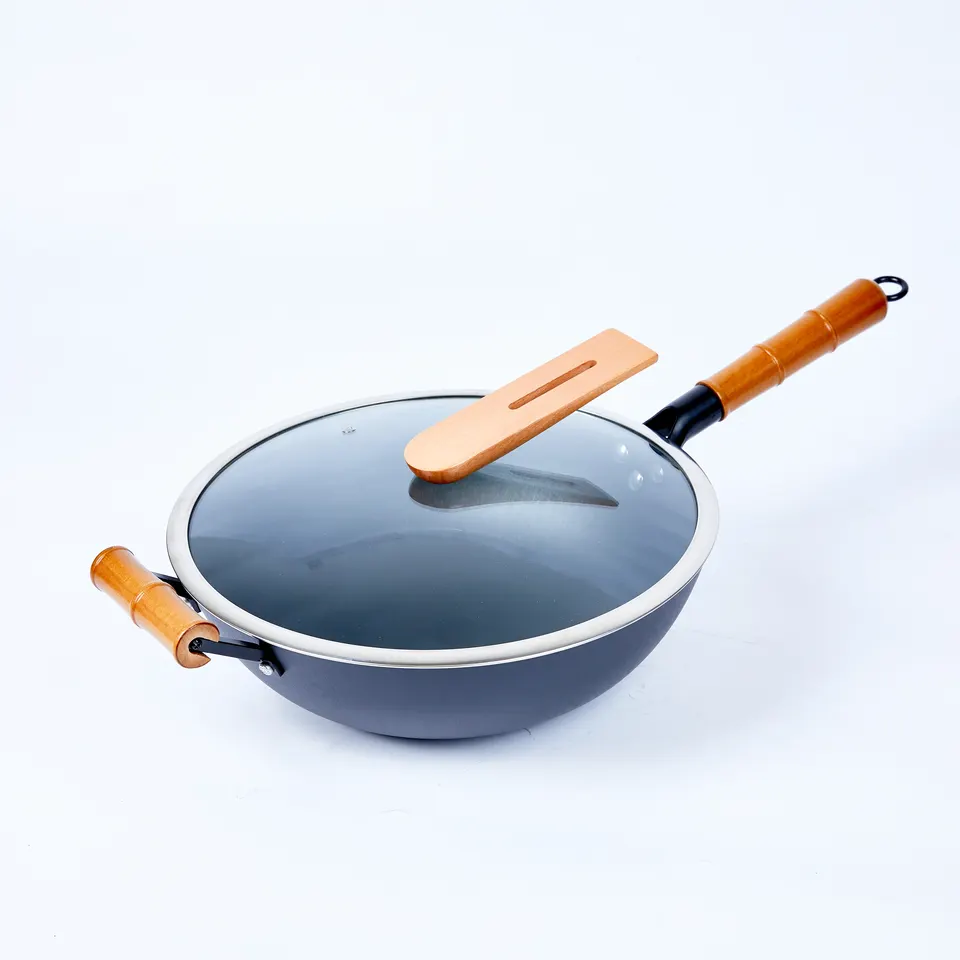
Flat Bottom Glass Lid Cast Iron Non Stick Wok With Wooden Handle
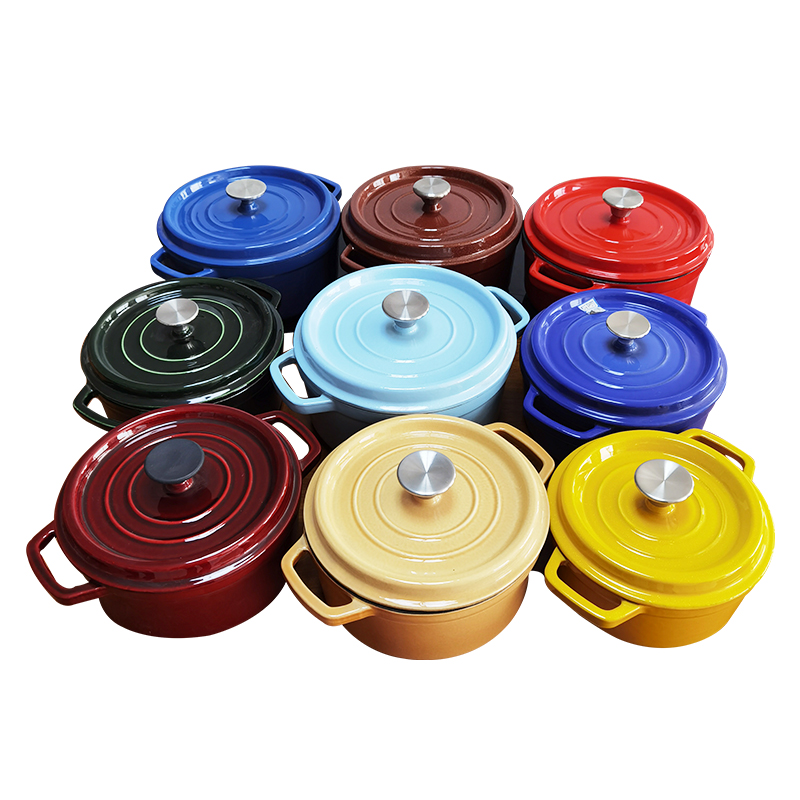
Premium Dutch Oven Non-Stick Casserole Cast Iron Enamel Soup Pots / Frying Pans

Pre-Seasoned Non-stick Cast Iron Wok With One Rivet Wooden Handle
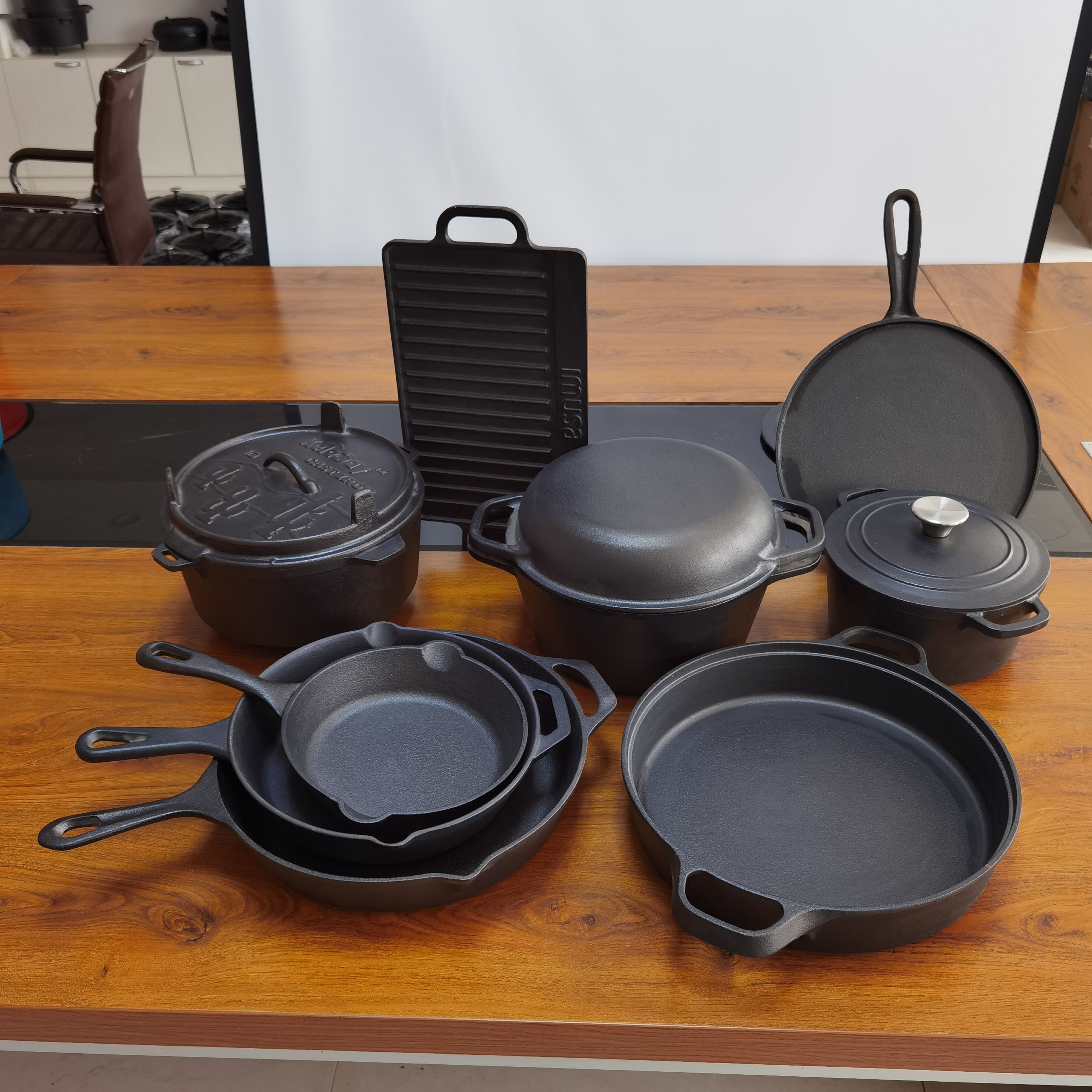
Pre-seasoned cast iron cookware cast iron pots and pans set
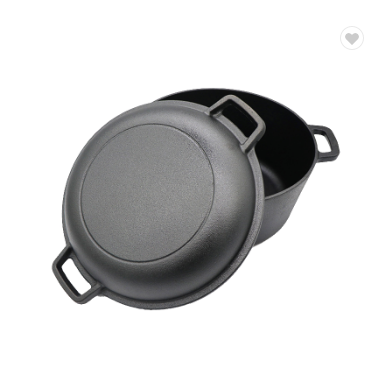
New Design Pre-Seasoned Bbq Cast Iron Pot 6 Quart Round Shape 2 In 1 Dutch Oven With Lid
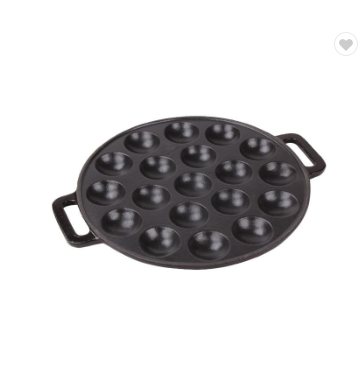
Factory Price 19 Holes Round Pre-Seasoned Cast Iron Bakeware Nonstick Cake Mould Pan

China low price low moQ the best-selling cast iron enamel pot
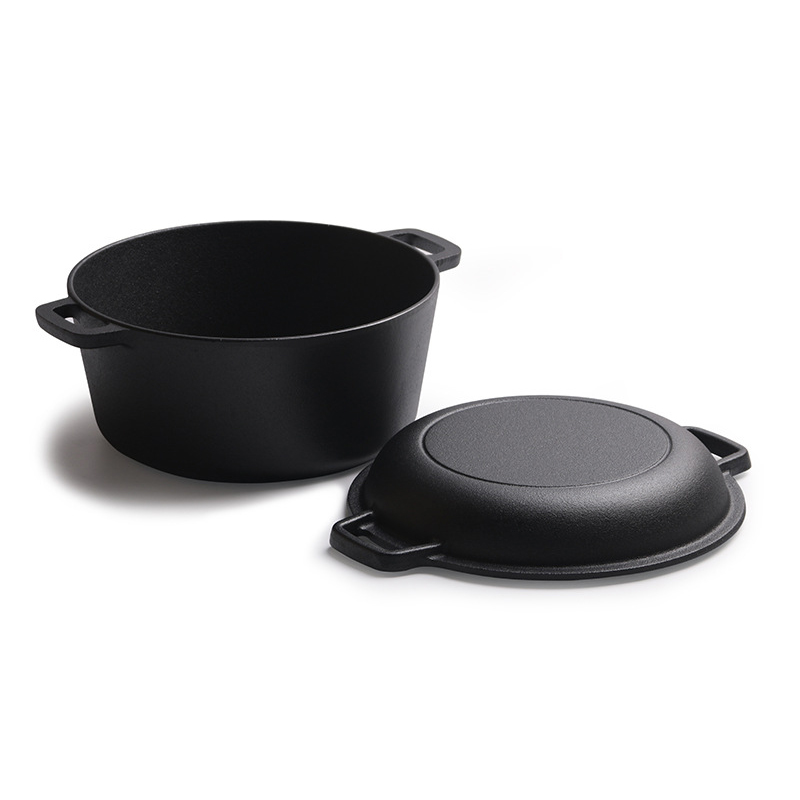
Premium Vegetable Oil Non Stick Cast Iron Pot 2 In 1 Dutch Oven
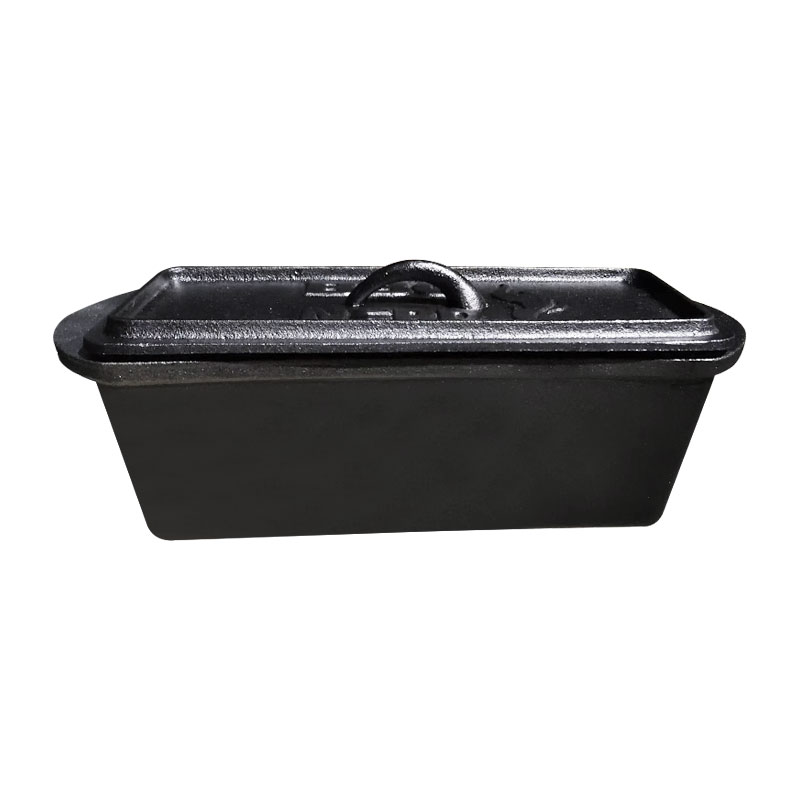
Factory wholesale Pre-seasoned Cast Iron Bread Maker / Bread Pot With Lid
Is It Safe To Cook Acidic Foods In Cast Iron?
Can cast iron POTS safely cook acidic foods, such as tomatoes, vinegar, lemons, etc.? The answer is - Yes, but the correct method must be mastered to balance flavor and safety.
When traditional cast iron POTS have not formed a stable "oil film" or are not enameled, prolonged contact with strongly acidic foods may lead to excessive iron ion precipitation, affecting the taste of the food and even causing spots or corrosion on the cookware. However, this does not mean that acidic foods are "insulated" from cast iron POTS. As long as it is properly maintained, cast iron POTS remain one of the ideal choices for cooking acidic dishes.
Enamel cast iron POTS are ideal partners for cooking acidic foods. Its inner wall is covered with a smooth enamel coating, effectively isolating the food from the metal body, preventing excessive release of iron ions, avoiding discoloration or abnormal taste of the food, and at the same time retaining the heat storage advantage of cast iron itself. This means you can use it with confidence to stew tomato soup, beef stewed in red wine, fish in sour soup and other dishes, enjoying both health and deliciousness.
As for traditional cast iron POTS without coatings, as long as the pot body has been fully "nourished" and formed a stable oil film layer, it is usually safe to stew acidic foods for a short time. The key lies in avoiding prolonged high-temperature stewing of acidic liquids or storing them overnight in the pot. In addition, timely cleaning and oiling maintenance after each use can help extend the service life of the cookware.
Overall, when cooking acidic foods, choosing an enamel cast iron pot is a safer and more friendly way, especially suitable for healthy families who pursue the original flavor of ingredients and low-oil cooking. It not only meets diverse cooking needs, but also combines beauty and functionality, making it a reliable all-rounder in the kitchen.
Is Cast Iron Healthier Than Stainless Steel?
In modern kitchens, the choice of cookware is directly related to the cooking experience and dietary health. Compared with stainless steel POTS, cast iron POTS have significant advantages in terms of health, especially suitable for the dietary concept that emphasizes naturalness and less additives. First of all, cast iron POTS can naturally release a small amount of iron during the cooking process, which helps the human body supplement iron and prevent iron deficiency anemia. This intangible nutritional supplement is something that stainless steel POTS do not have. In addition, cast iron POTS have no chemical coating and do not contain potentially harmful substances such as PFOA or PTFE. They do not release toxic gases at high temperatures. They are natural, safe, and free of additives, making them suitable for use in families of all ages. In contrast, although high-quality stainless steel POTS are also safe materials, they may release trace amounts of nickel or chromium when used for high-temperature cooking or acidic foods (such as tomatoes and vinegar), posing a risk to certain people with allergic constitutions. Cast iron material is more stable and less likely to release harmful metals. Especially under the condition of good pot maintenance, the natural oil film formed can also provide a certain anti-sticking effect, reducing the reliance on chemical coatings. Another health advantage of cast iron POTS is low oil fume cooking. Because of its uniform heat conduction and strong heat storage capacity, food can be cooked at medium and low temperatures, avoiding the fumes produced by high temperatures and protecting the respiratory system. In addition, cast iron POTS are heavy and have good sealing performance, making them suitable for waterless cooking and slow stewing with less oil, which conforms to the modern people's healthy dietary trend of "light oil, light salt and original flavor". Of course, stainless steel POTS are lighter and easier to maintain, making them suitable for daily operations such as quick stir-frying and boiling. However, if evaluated comprehensively from a health perspective, especially for families that pay attention to nutrition, low oil content and non-toxic materials, cast iron POTS are undoubtedly a better choice. It is not only a cooking tool, but also a manifestation of a healthy lifestyle.

Uiui Inaianei mo nga utu mo te tunu tunu rino
Tena koa Whakakiia te Puka i raro iho nei, a ka hoki mai ta matou roopu ki a koe me te utu, nga taipitopito hua, me nga whiringa whakaritenga.






















